External links
- 97 (BRITFOR) Signal Squadron (Volunteers) - official
97 (BRITFOR) Signal Squadron (Volunteers) was a Territorial Army(now Army Reserve) squadron in the Royal Corps of Signals in the British Army. The squadron comprised personnel from other TA signals units who had volunteered for an operational tour in support of British Army peacekeeping operations (BRITFOR) in the Balkans under EUFOR Althea and KFOR.
The original deployment was in the winter of 2001, and was the first major deployment overseas of a Territorial Army unit overseas since the Second World War.

The Army Reserve is the active-duty volunteer reserve force of the British Army. It is separate from the Regular Reserve whose members are ex-Regular personnel who retain a statutory liability for service. The Army Reserve was known as the Territorial Force from 1908 to 1921, the Territorial Army (TA) from 1921 to 1967, the Territorial and Army Volunteer Reserve (TAVR) from 1967 to 1979, and again the Territorial Army (TA) from 1979 to 2014.

Yeomanry is a designation used by a number of units or sub-units of the British Army Reserve, descended from volunteer cavalry regiments. Today, Yeomanry units serve in a variety of different military roles.

The Royal Corps of Signals is one of the combat support arms of the British Army. Signals units are among the first into action, providing the battlefield communications and information systems essential to all operations. Royal Signals units provide the full telecommunications infrastructure for the Army wherever they operate in the world. The Corps has its own engineers, logistics experts and systems operators to run radio and area networks in the field. It is responsible for installing, maintaining and operating all types of telecommunications equipment and information systems, providing command support to commanders and their headquarters, and conducting electronic warfare against enemy communications.
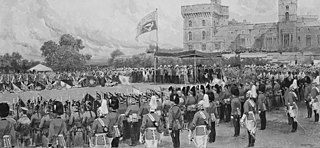
The Territorial Force was a part-time volunteer component of the British Army, created in 1908 to augment British land forces without resorting to conscription. The new organisation consolidated the 19th-century Volunteer Force and yeomanry into a unified auxiliary, commanded by the War Office and administered by local county territorial associations. The Territorial Force was designed to reinforce the regular army in expeditionary operations abroad, but because of political opposition it was assigned to home defence. Members were liable for service anywhere in the UK and could not be compelled to serve overseas. In the first two months of the First World War, territorials volunteered for foreign service in significant numbers, allowing territorial units to be deployed abroad. They saw their first action on the Western Front during the initial German offensive of 1914, and the force filled the gap between the near destruction of the regular army that year and the arrival of the New Army in 1915. Territorial units were deployed to Gallipoli in 1915 and, following the failure of that campaign, provided the bulk of the British contribution to allied forces in the Sinai and Palestine Campaign. By the war's end, the Territorial Force had fielded twenty-three infantry divisions and two mounted divisions on foreign soil. It was demobilised after the war and reconstituted in 1921 as the Territorial Army.
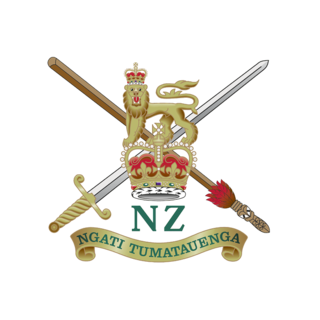
The New Zealand Expeditionary Force (NZEF) was the title of the military forces sent from New Zealand to fight alongside other British Empire and Dominion troops during World War I (1914–1918) and World War II (1939–1945). Ultimately, the NZEF of World War I became known as the First New Zealand Expeditionary Force. The NZEF of World War II was known as the Second New Zealand Expeditionary Force (2NZEF).
Options for Change was a restructuring of the British Armed Forces in summer 1990 after the end of the Cold War.
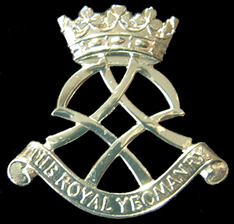
The Royal Yeomanry (RY) is the senior reserve light cavalry regiment of the British Army. Equipped with Supacat Jackal variants, their role is to conduct mounted and dismounted formation reconnaissance. The Regimental Headquarters is located in Leicester, with squadrons in Fulham, Nottingham, Dudley, Croydon, Telford, and Leicester. The regiment is part of the Royal Armoured Corps and is only reserve cavalry regiment to resubordinate into regular brigade as part of the Future Soldier Programme, which in turn arose from the Integrated Review of Security, Defence, Development and Foreign Policy published in March 2021.

The Royal Hong Kong Regiment (The Volunteers) (RHKR(V)) (Chinese: 皇家香港軍團(義勇軍)), formed in May 1854, was a local auxiliary militia force funded and administered by the colonial Government of Hong Kong. Its powers and duties were mandated by the Royal Hong Kong Regiment Ordinance.
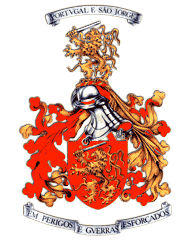
The Portuguese Army is the land component of the Armed Forces of Portugal and is also its largest branch. It is charged with the defence of Portugal, in co-operation with other branches of the Armed Forces. With its origins going back to the 12th century, it can be considered one of the oldest active armies in the world.

The 5th Infantry Brigade was a regular infantry brigade of the British Army that was in existence since before the First World War, except for a short break in the late 1970s. It was an Airborne Brigade from the early 1980s until amalgamating with 24th Airmobile Brigade, in 1999, to form 16 Air Assault Brigade.
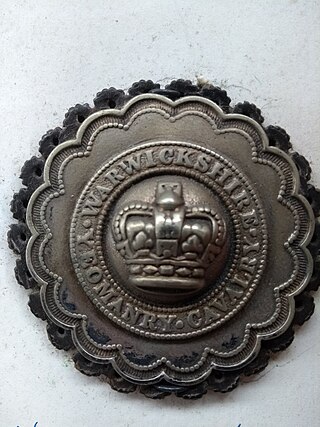
The Warwickshire Yeomanry was a yeomanry regiment of the British Army, first raised in 1794, which served as cavalry and machine gunners in the First World War and as a cavalry and an armoured regiment in the Second World War, before being amalgamated into the Queen's Own Warwickshire and Worcestershire Yeomanry in 1956. The lineage is maintained by B Squadron, part of The Royal Yeomanry.

The North Somerset Yeomanry was a part-time cavalry regiment of the British Army from 1798 to 1967. It maintained order in Somerset in the days before organised police forces, and supplied volunteers to fight in the Second Boer War. It served on the Western Front in the First World War. At the outbreak of the Second World War, it continued to operate in the mounted role and then as a specialist signals unit. Postwar it joined the Royal Armoured Corps and later became infantry. Its lineage today is maintained by 93 Squadron 39 (Skinners) Signal Regiment.
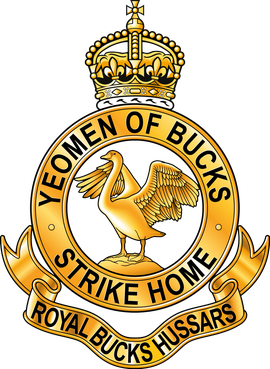
The Royal Buckinghamshire Yeomanry is an Operational Hygiene Squadron of the Royal Logistic Corps, originally formed as cavalry in 1794, and has also served in artillery and signals roles. The lineage is continued by 710 Operational Hygiene Squadron, Royal Logistic Corps.
The Kensington Regiment (Princess Louise's) is a unit of the British Army, which originated in the Volunteer Rifle Corps' movement of the 1850s. In 1908 it became a battalion of the London Regiment in the Territorial Force. It was an infantry regiment from 1908 to 1940, a heavy fire support unit from 1940 to 1945, and has been a unit of the Royal Corps of Signals since 1945.

LICSG is now the reserve element of a regular Royal Signals unit 15th Signal Regiment and as of 1 May 2014 became 254 Signal Squadron.
The 65th Division of the British Army was a second-line Territorial Force division, formed in 1914, which served on home defence duties during the First World War.

Force Troops Command was a combat support and combat service support command of the British Army. Its headquarters was at Upavon, Wiltshire. It was formed in 2013 as a re-designation of the previous Headquarters Theatre Troops. Force Troops Command was renamed as 6th Division in August 2019.
The 1st Lancashire Engineer Volunteer Corps was a Volunteer unit of Britain's Royal Engineers, first raised in 1860. It went on to spin off a unit of fortress engineers and provided a signals training centre during World War I. Its successor units provided signal support for West Lancashire Territorial Army (TA) formations in the early stages of World War II, and for Eighth Army HQ during the Second Battle of El Alamein, the advance to Tunis, invasion of Sicily and through Italy, ending the war in Austria. Postwar successor units have continued in the TA and Army Reserve to the present day.
The Glamorgan Fortress Royal Engineers was a Welsh Territorial Army (TA) unit of Britain's Royal Engineers, first raised in 1885 as a Volunteer unit of Submarine Miners to defend the Severn Estuary. During World War I it carried out defence work in England and Gibraltar, and detachments served on the Western Front. In World War II it served in the North African campaign, including the Second Battle of El Alamein, and the Allied invasion of Sicily. Postwar, the unit continued in the TA until 1961.

The 9th Special Communications Unit, later redesignated as the 92nd Signal Regiment, and from 1967 as 2 Signal Squadron is a communications unit of the British Army, belonging to the Royal Corps of Signals.